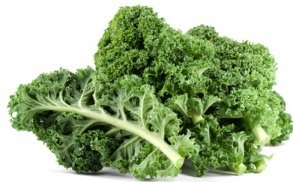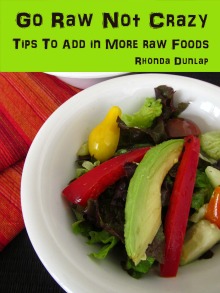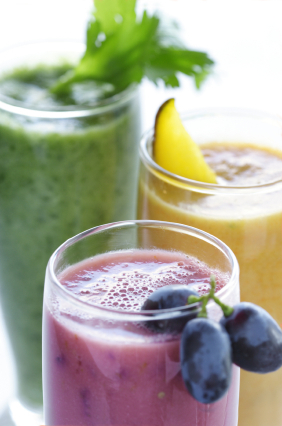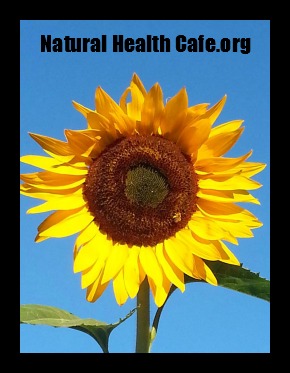Benefits of Kale
The benefits of kale are different from other leafy greens as they have 1000 times more micronutrients according to Joel Furhman, MD which makes this super green part of any superfoods diet.
What is Kale? It is the new beef!

The benefits of kale is that it may be one of the most healthiest vegetables on earth. Unlike other leafy greens, kale is not part of the lettuce family. Kale is actually a member of the cruciferous family which includes cabbage, cauliflower and broccoli plants. Although kale is genetically similar to cabbage and broccoli, it does not form a head when it grows, except for the ornamental varieties. Kale offers all of the goodness of broccoli, but in a leafy, winter-cultivated vegetable form.
Kale grows on a white, fibrous stalk and the most common of the kale varieties are curly kale or plain-leafed kale such as Lacinto. The leaf colors of kale can be light green, green, dark green or even violet-green or violet-brown. Dinosaur kale is one of the kale varieties that has dark, blue-green leaves and has a more delicate and sweeter taste than curly kale. The vibrant colors of this curly-leafed plant makes this a beautiful vegetable to consume.
There are kale varieties called flowering kale and even “Oriental cabbage.” Although these plants are usually grown and sold for ornamental purposes, they are just as edible and nutritious as the kale varieties sold in grocery stores or at the farmers markets.
If you want to eat any of the ornamental kale varieties, just make sure that they have not been treated with pesticides or other harmful chemicals since they are raised for decoration rather than human consumption. Ornamental kale has a more tender texture and mellower flavor.
Health Benefits of Kale
The benefits of kale is in the nutrients it contains. Cancer-fighting properties and other health benefits have been linked to members of the cruciferous vegetable family. The health benefits of kale are similar to the many health benefits of broccoli and cabbage. Here are some specific kale nutrients and how they affect your wellness:
Vitamins- Kale is rich in vitamins A, C and K and contains some vitamin B6 and E. Kale, being a rich source of vitamin K, which gives it anti-inflammatory properties. Foods rich in vitamin C rich are known to help with some joint inflammations.
Minerals- Notable minerals in kale include manganese, calcium and copper. These minerals have been already broken down by the kale plant and can be directly absorbed into the cells of the body.
Antioxidants- The antioxidants in kale seem to be anti-cancer, too. Specifically, the antioxidants in kale is its carotenoids, which are significant in the realm of cancer prevention. Lutein and beta-carotene are two specific antioxidants that helps to protect the human body from oxidative stress, specifically against such diseases as cataracts, atherosclerosis and COPD and, of course, cancer.
Cancer Preventative- The phytonutrients in kale helps to reduce the risk of several cancers including, but possibly not limited to, breast, bladder, colon, lung and ovarian. The actions of these phytonutrients not only reduce cancer, but in general, help to strengthen the entire immune system.
Lung Health- The presence of vitamin A in kale helps protect the lungs. This is especially important to smokers and those who are exposed to secondhand smoke.
Anti-Inflammatory- The abundance of vitamin K makes kale an anti-inflammatory vegetable.
Heart Health- A phytonutrient called Indole-3-carbinol in kale helps to reduce harmful cholesterol levels in the blood and protect the cardiovascular system.
Diabetes- Kale helps to maintain healthy blood sugar levels. This makes kale an excellent food for diabetics.
Omega 3- Omega 3 is another kale nutrient as kale is a rich vegetable source of Omega 3.
Fiber- Kale is a high fiber food. Of the many kale nutrients, its high fiber characteristic may be the most practical than a lettuce-based salad.
Selecting Kale
When choosing kale, look for deep-colored leaves that look fresh and not wilted. If possible, choose the smaller leaves since these will be more tender. Although kale is available throughout the year, it is primarily a winter vegetable.
As with any fresh vegetable, use
it as soon as possible. Kale will keep in your refrigerator, but after
several days it gets more bitter.
It is always best to choose organically-grown kale to avoid or reduce the presence of pesticides.
The benefits of kale makes this superfood a must in your diet--in salads, green smoothies, any kind. Two of my favorite kale recipes is Kale Chips and Kale Salad. I encourage you to try them both!
Finished with Kale Nutrients? Perhaps you will enjoy some of these pages on Superfoods:
Go from Benefits of Kale to Superfoods Diet
Follow
Guide with Over 50 Recipes!

Guide to Super Raw Foods is now available for Kindle or paperback on Amazon

Sign-up for Newsletter and get my Free E-Book Go Raw Not Crazy
Check Out These Sites:




